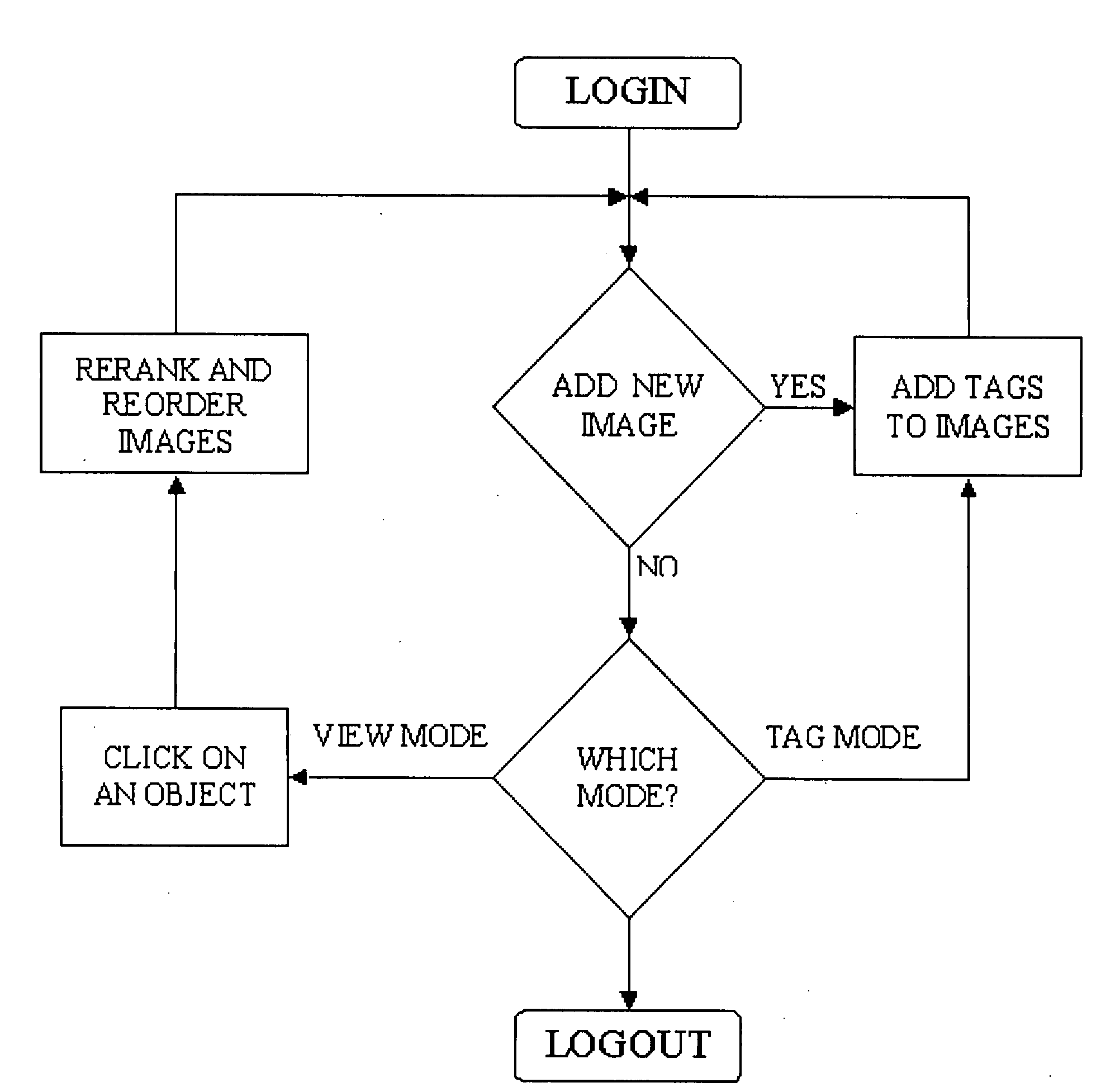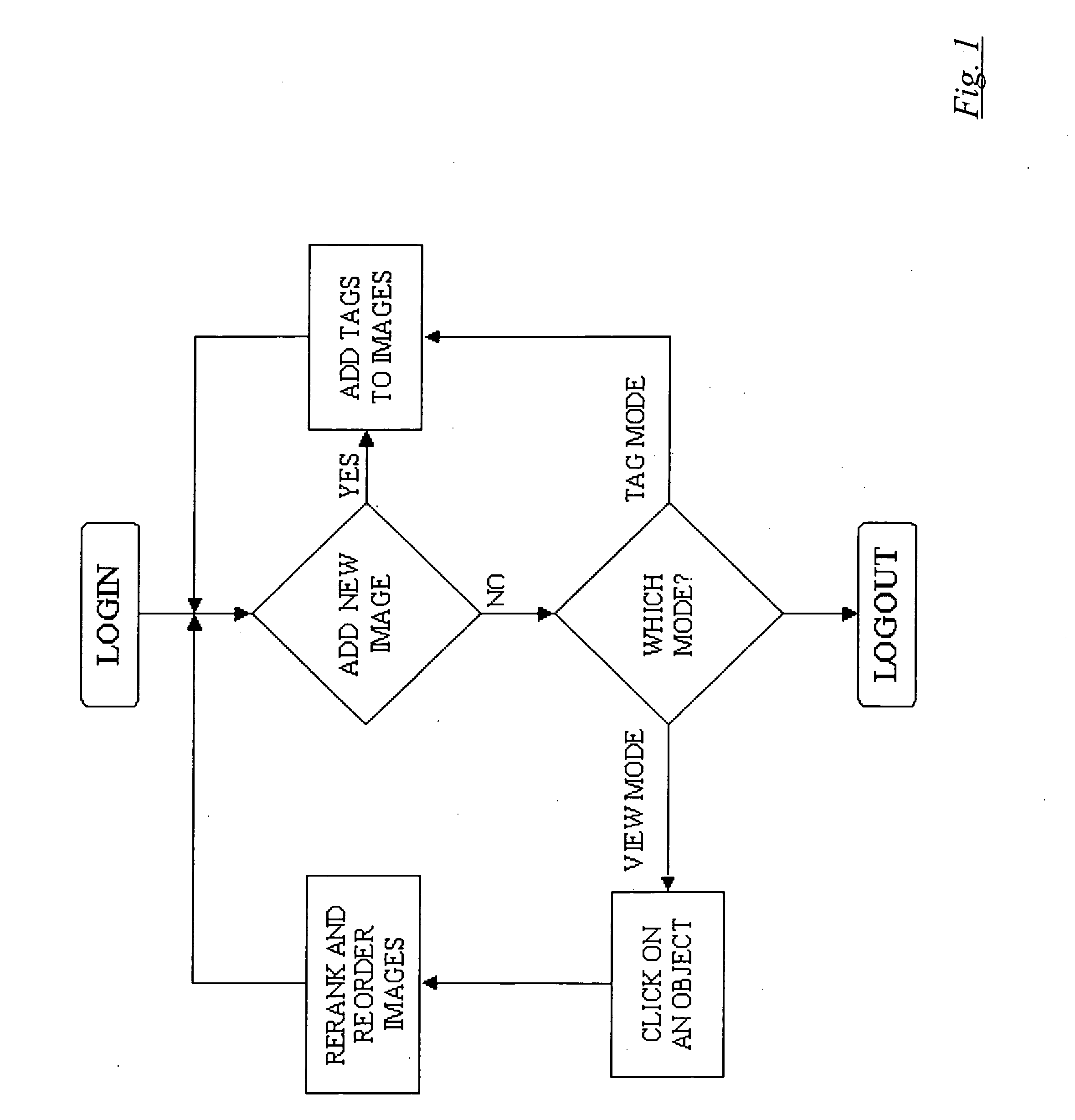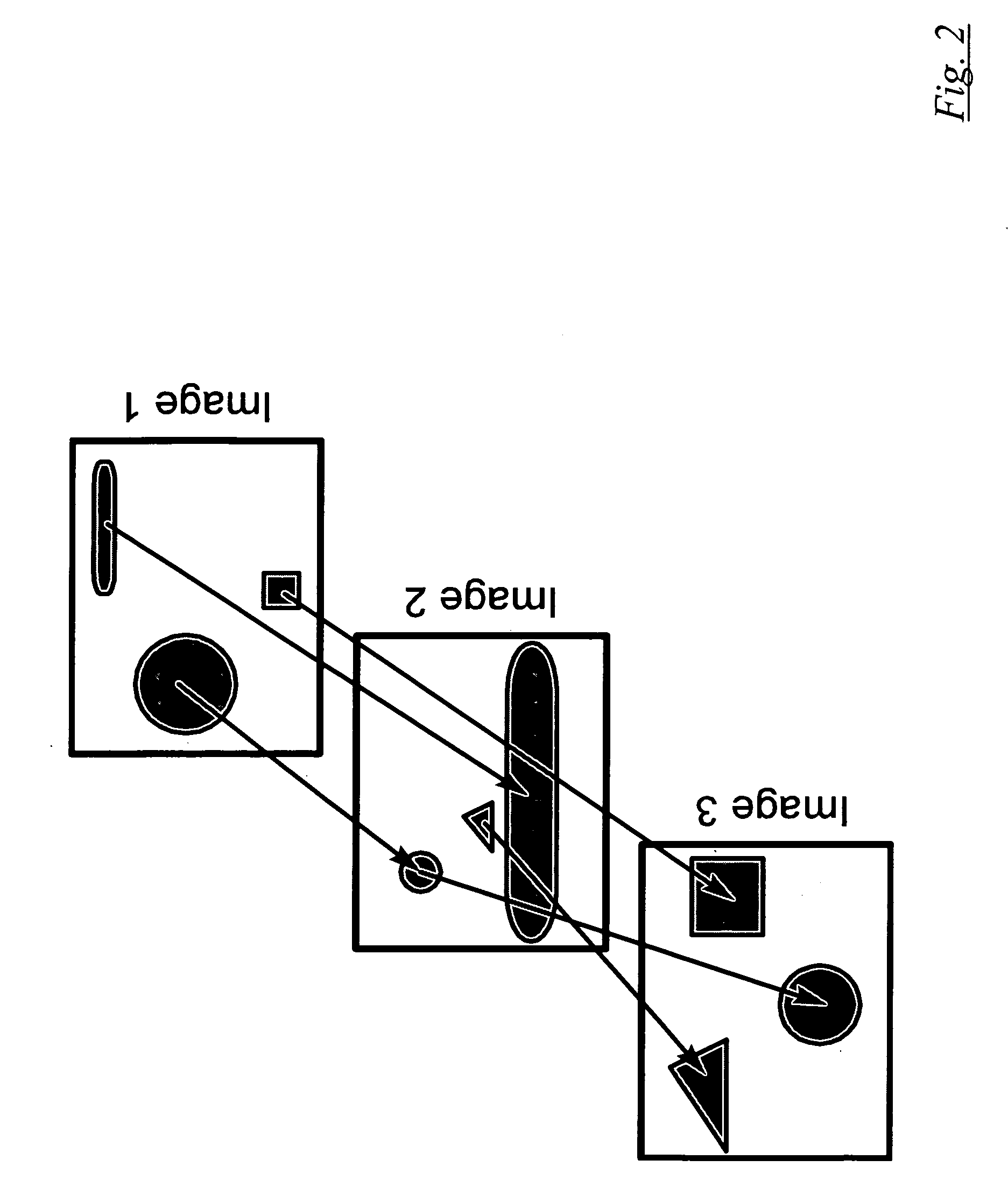Method, system and computer program for interactive spatial link-based image searching, sorting and/or displaying
a spatial link and image search technology, applied in the field of search, sorting and/or displaying images, can solve the problems of confusion, inability to perfect, and inability to search very accurately, and achieve the effect of efficient image registration
- Summary
- Abstract
- Description
- Claims
- Application Information
AI Technical Summary
Benefits of technology
Problems solved by technology
Method used
Image
Examples
Embodiment Construction
[0045]One aspect of the present invention consists of an interactive spatial link-based method, system and computer program for searching, sorting and / or displaying digital images. According to this aspect, images are partially tagged and the relational and positional information of the tags are utilized in order to search for untagged and unidentified objects without performing content analysis. By anchoring each tag at a specific location within an image, a specific point in several images is associated to a single unique tag. In other words, linking points in several images together indicates the presence of a particular object.
[0046]By having several such link points in every image, it becomes possible to construct a graphical or circuit representation of the objects by utilizing the distance between the link points as a measure of the resistance between those points. Now, if a user wants to search for a particular linked or unlinked object, all he or she has to do is to click o...
PUM
 Login to View More
Login to View More Abstract
Description
Claims
Application Information
 Login to View More
Login to View More - R&D
- Intellectual Property
- Life Sciences
- Materials
- Tech Scout
- Unparalleled Data Quality
- Higher Quality Content
- 60% Fewer Hallucinations
Browse by: Latest US Patents, China's latest patents, Technical Efficacy Thesaurus, Application Domain, Technology Topic, Popular Technical Reports.
© 2025 PatSnap. All rights reserved.Legal|Privacy policy|Modern Slavery Act Transparency Statement|Sitemap|About US| Contact US: help@patsnap.com



